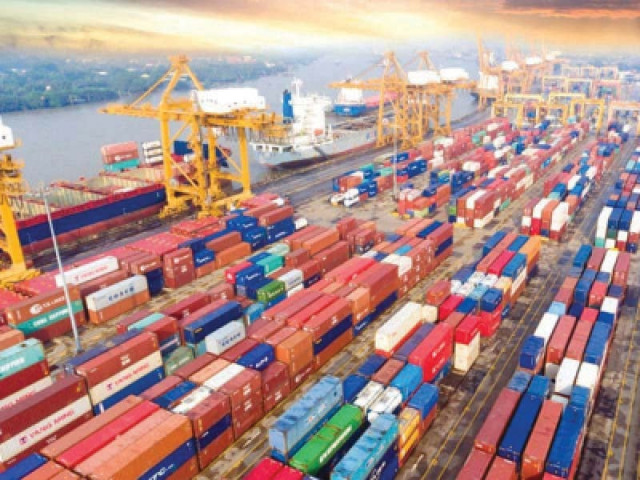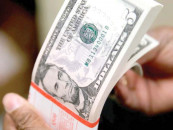Achieving $50b export target in five years
Exports need to grow 10% a year, radically different trade policy should be adopted

The recently established Export Advisory Council of the Ministry of Commerce has set an export target of $50 billion in five years and aims to increase it to $100 billion in the long term.
A 20-member exporters’ delegation, led by the commerce minister, has recently visited China to explore market opportunities to raise Pakistan’s current low level of exports.
Considering that this year’s exports are estimated to be about $30 billion, the exports would need to grow at a compound annual growth rate of about 10% to reach this target in the next five years.
For this to happen, the government will have to opt for a radically different trade policy compared to the current one, as in the last 15 years, the existing trade policy has only yielded an average increase of 4% annually.
During the last four decades, Pakistan’s best export performance was from FY 2001 to FY 2008 when exports grew by an average of 10% and doubled in seven years from $9 billion to $19 billion. However, since then, it has been downhill.
To understand why exports rose sharply from 2002 onwards while they stagnated from 2008 onwards, we can see that while during the pre-2002 period, import taxes and restrictions were considerably reduced, from 2008 onwards, it was just the opposite.
The disastrous effect of high tariffs was realised while formulating the National Tariff Policy of 2019-24. It was acknowledged that the employment of import tariffs as a revenue tool has created multiple distortions and affected the competitiveness of manufacturing, especially the export-oriented sector.
Overall, the high tariffs have resulted in de-industrialisation and serious losses to Pakistan’s global export market share.
If, instead of focusing solely on seeking preferential market access, our high-level delegation dedicates some time to understanding the policy changes implemented by the Chinese government from 1980 onwards and endeavours to implement similar reforms, they are likely to achieve greater success in boosting Pakistan’s exports.
Even a brief exploration would reveal that the significant shift in Chinese policy occurred from import substitution policies, which were followed since 1949, to export-led growth starting in 1980.
Before 1980, China maintained high import barriers, including licensing and quotas. Average applied tariff stood at 41% and average ratio of non-tariff barriers was 51%.
Read Exporters call for reforms to spur growth
The exchange rate was overvalued by 44%. In addition to import barriers, exports were constrained by licensing and export taxes.
These barriers were gradually reduced over the subsequent 15 years. In 1994, China promulgated the Foreign Trade Law, consolidating the progress made since 1980 and modernising their trade policy.
After becoming a member of the World Trade Organisation (WTO) in 2001, they thoroughly revised their trade policy once again to comply with WTO laws and regulations. They also radically lowered import tariff rates to less than 9%. In fact, currently their trade weighted average is about 3%.
During these periods of reforms, China did not run around asking for any preferential access like the Generalised Scheme of Preferences (GSP). Their focus was only on domestic reforms.
Perhaps, the only concession they sought from major economies like the United States was to have the same treatment as any other WTO member. Due to their focus on domestic reforms, they did not even enter into any bilateral or regional trade agreements until 2003.
On the other hand, Pakistani exporters allocate a significant portion of their time and energy trying to push the government to secure preferential market access through unilateral concessions from the major economies. This is the way they conduct their business in the domestic market through getting special treatment under SROs.
After years of lobbying, the acquisition of the GSP Plus concession in 2014, which rendered our exports eligible for duty-free access to the European Union, was hailed as a major game changer. However, in reality, little changed.
Despite the celebratory atmosphere, Pakistan’s exports hovered around $25-27 billion over the next 10 years of the GSP Plus.
Meanwhile, many competing regional countries managed to double their export shares during the same period through domestic reforms, while we experienced an annual average decline of 1.45%.
If we continue to neglect reforms and rely solely on schemes like GSP Plus, as we have in recent years, there is little prospect of meaningful change in the export volume over the next decade.
Recently, the interim government has undertaken various measures to reform taxation policies. It would be worthwhile if they could also initiate the reform of customs tariff, which serves as Pakistan’s primary trade policy instrument.
This is the key to achieving substantial growth in exports, enabling us to overcome balance of payments challenges and sparing us the need to seek additional IMF bailouts. Hopefully, such reforms will pave the way for a full economic recovery.
The writer is currently serving as a trade arbitrator at the WTO. Previously, he has worked as Pakistan’s Ambassador to WTO and FAO’s representative to the United Nations
Published in The Express Tribune, December 18th, 2023.
Like Business on Facebook, follow @TribuneBiz on Twitter to stay informed and join in the conversation.


















COMMENTS
Comments are moderated and generally will be posted if they are on-topic and not abusive.
For more information, please see our Comments FAQ